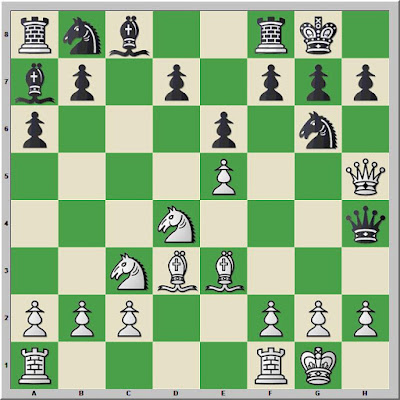The students in my beginner's group solved nine problems on a worksheet and one on the demo board. Among the printed problems were two designed to help the young players perceive the solution to this position.
White to move
 |
| After the unplayed 10...Qh4?? |
In the game, Staunton played 10...Qc7. Even here, his position has several problems (see "Guioco Siciliano").
Beginning students, however, do not see such tactics instantly. Often, they do not see them at all. Training develops their vision. The solution to these two problems requires the same tactical idea that refutes a move that Staunton rejected.
White to move
White to move
My advanced students wanted a chess ladder to structure competition within the team, so they played the first round of our annual ladder tournament. Time for instruction was limited, but we went through part of the first game from the Anderssen -- Staunton match at the First International Chess Tournament, London 1851. We discussed White's advantage in mobility and piece coordination after Black's tenth move.
Despite the unenviable nature of Black's position, Staunton missed a chance to equalize six move later when Anderssen muffed the move order of his attack. A different tactical idea from the one above leads to equalization. Staunton should have seen it.
Black to move
 |
| After 16.g4? |
















No comments:
Post a Comment